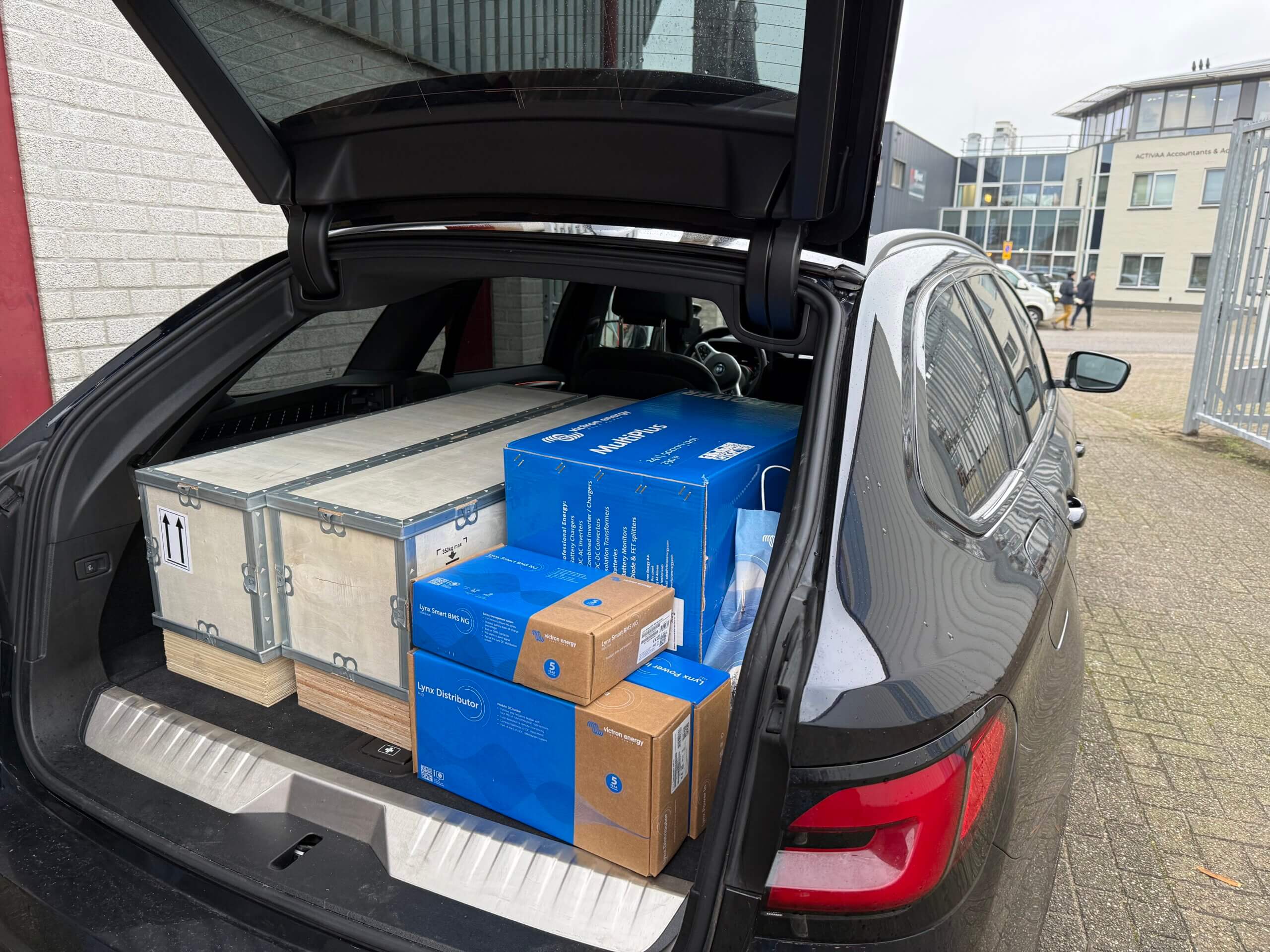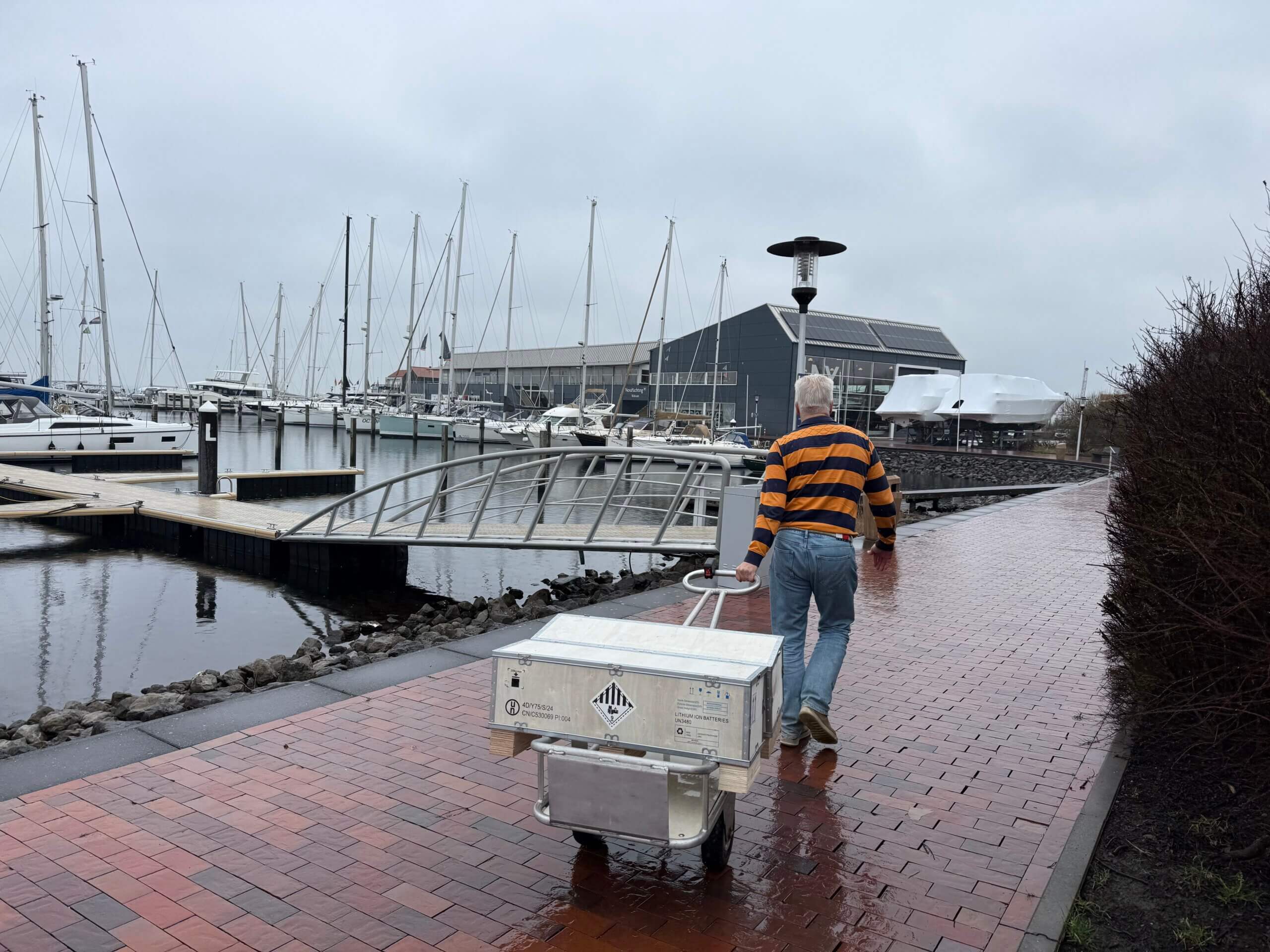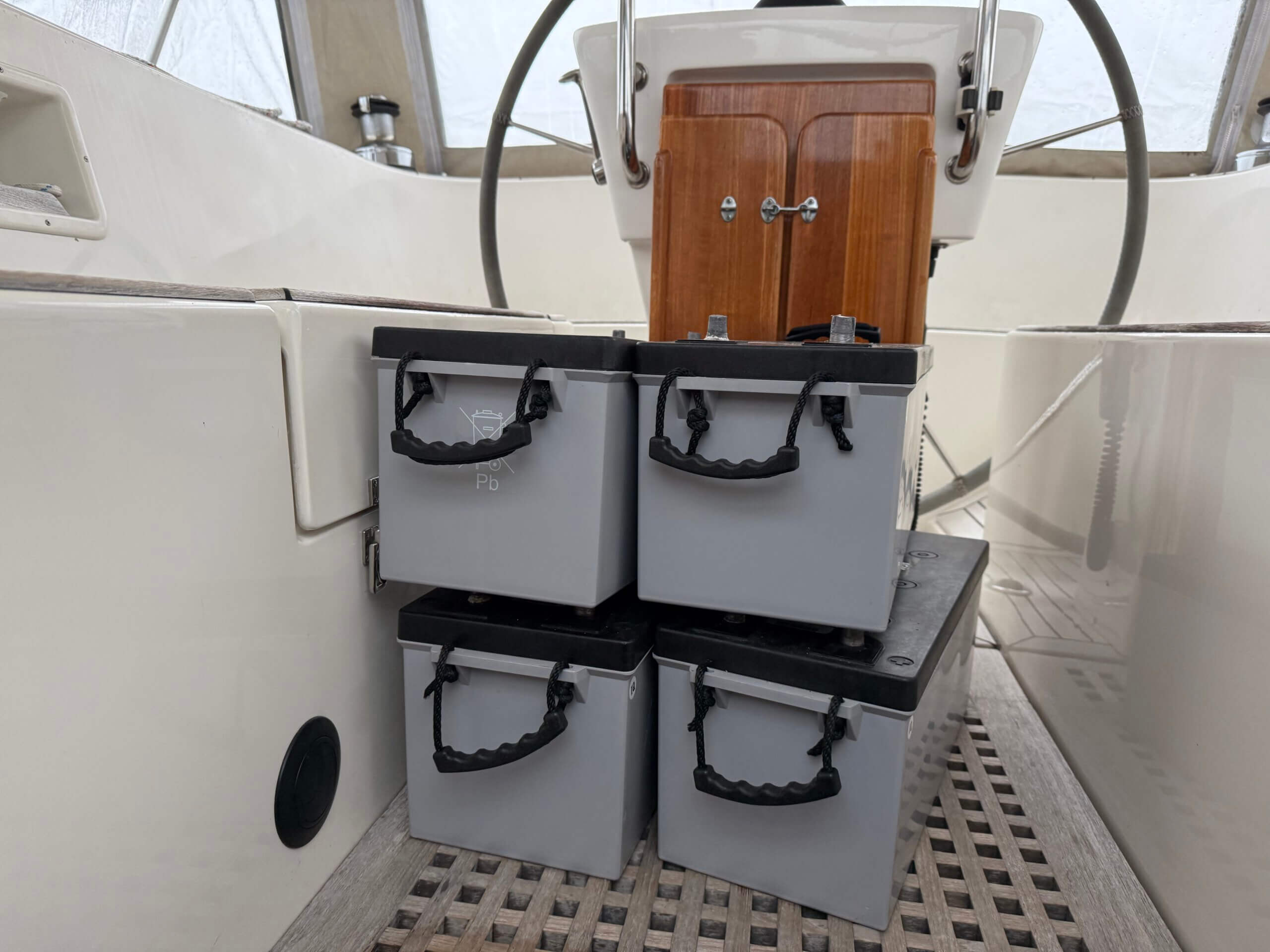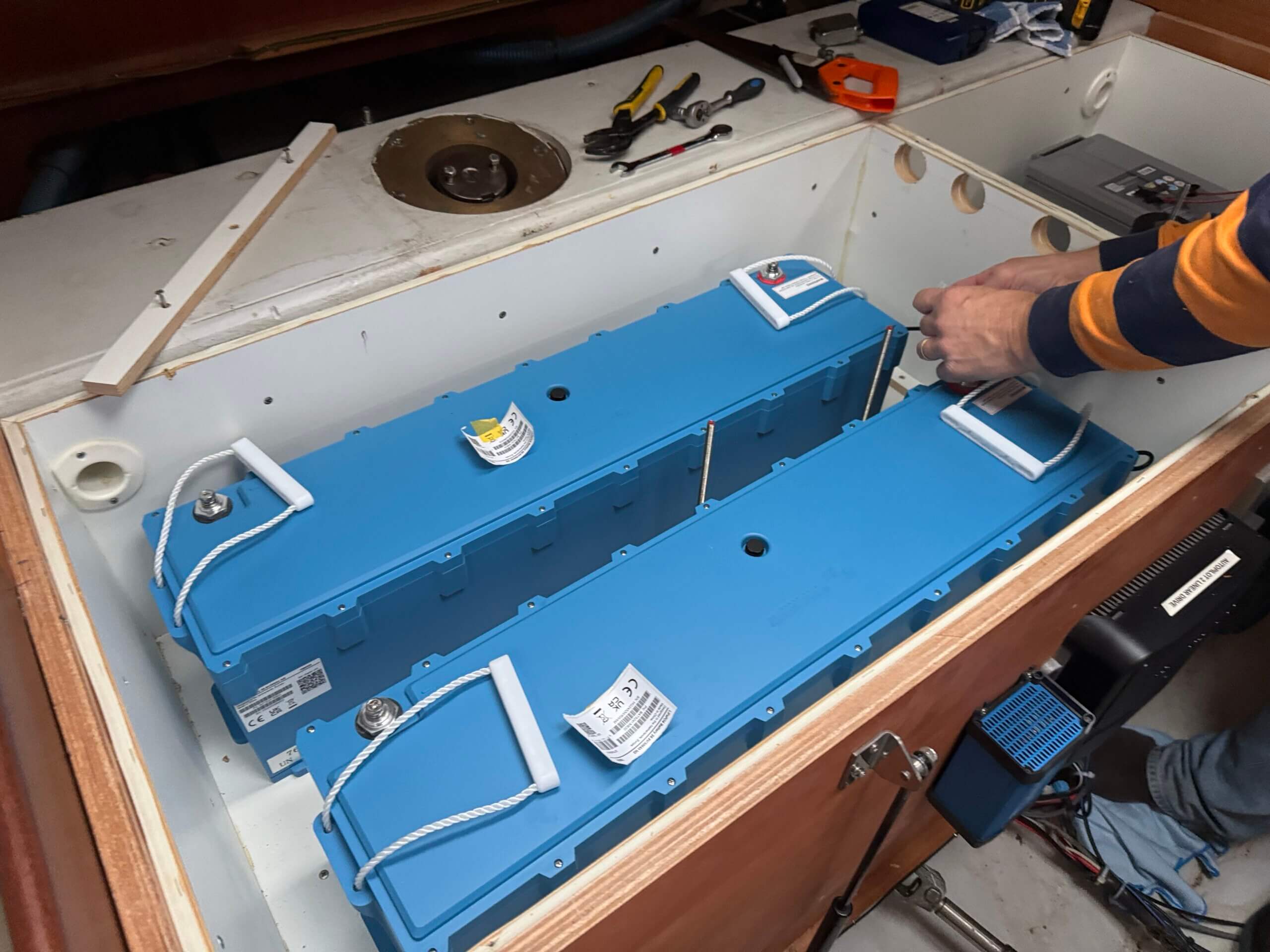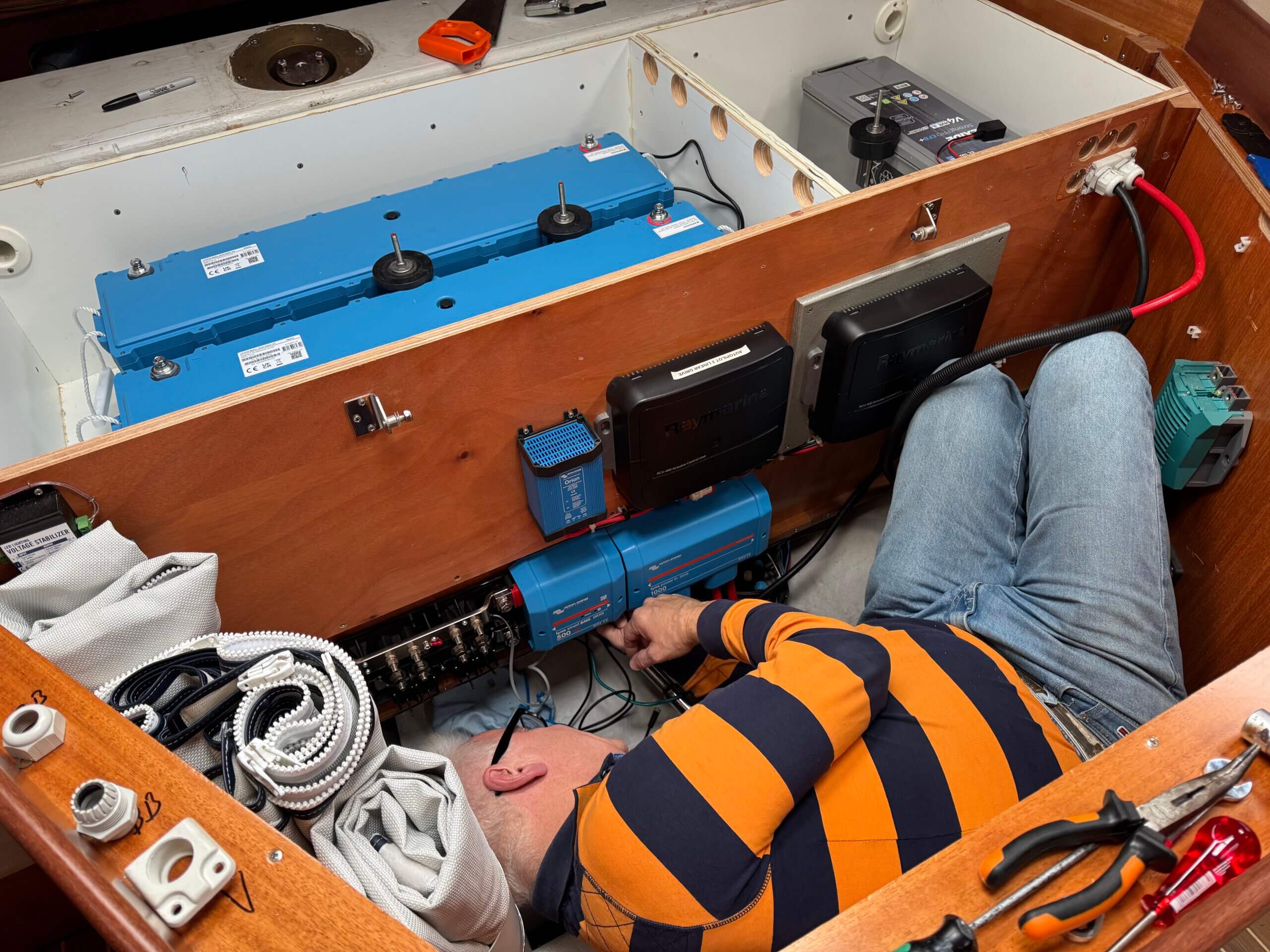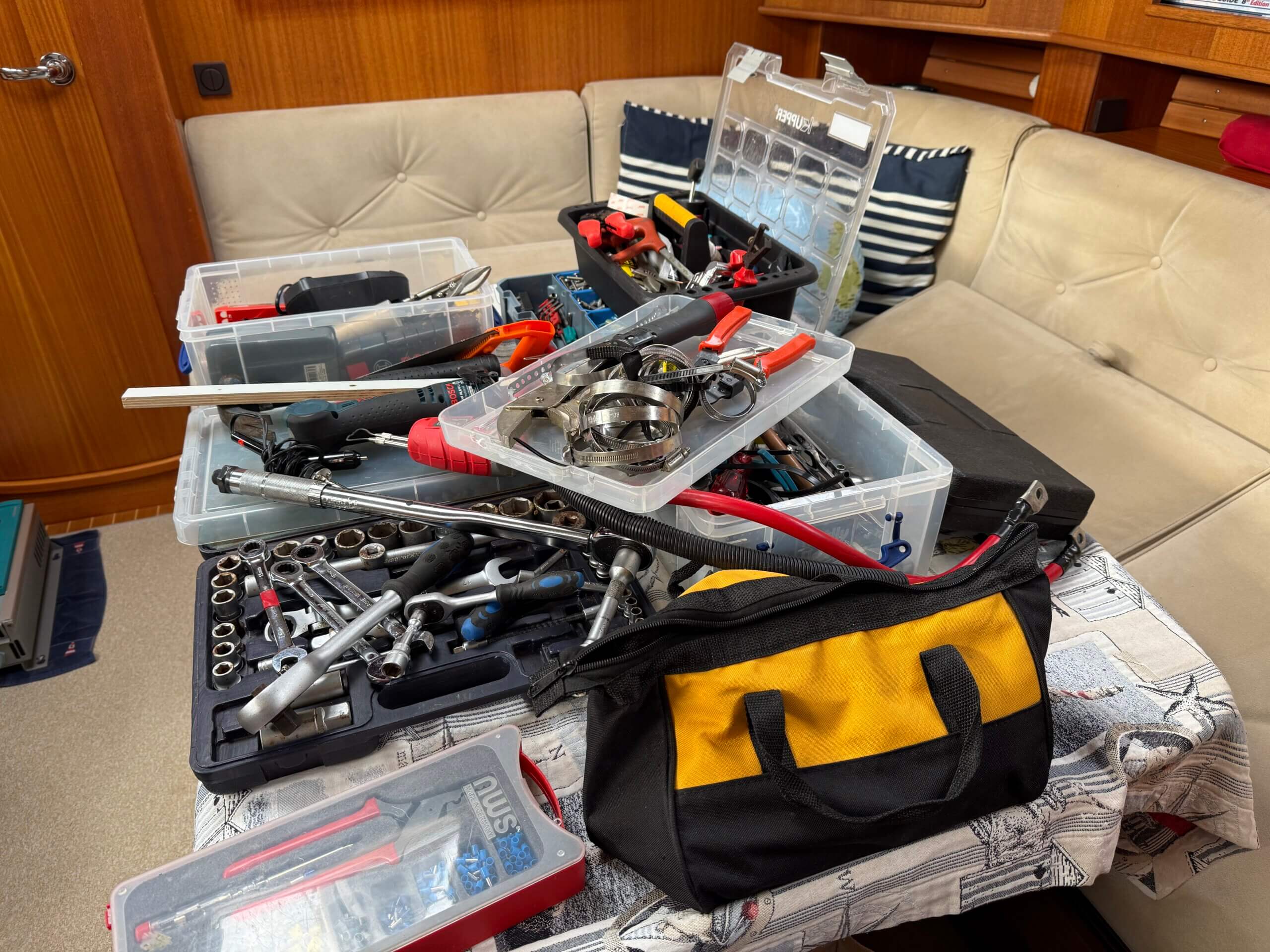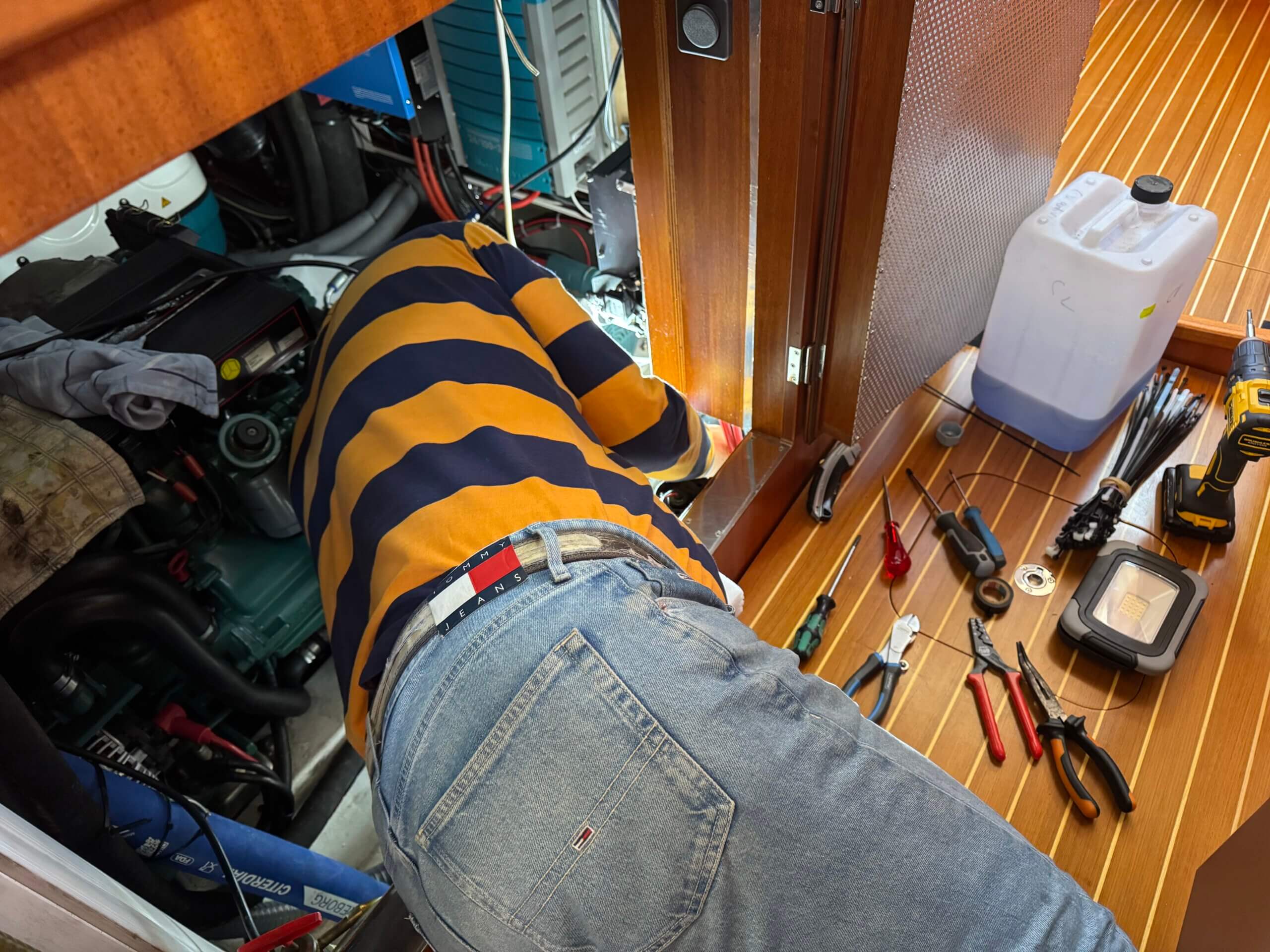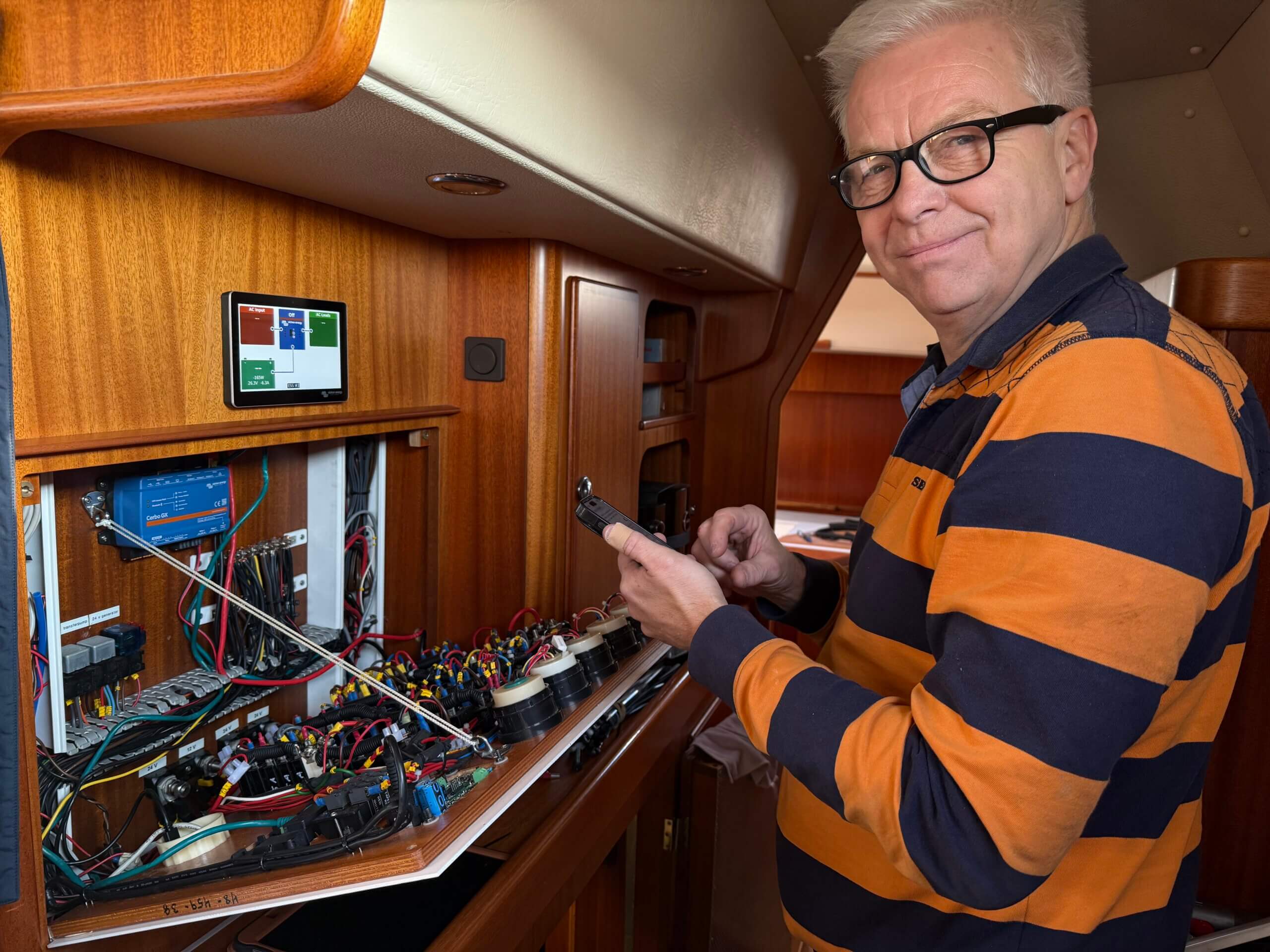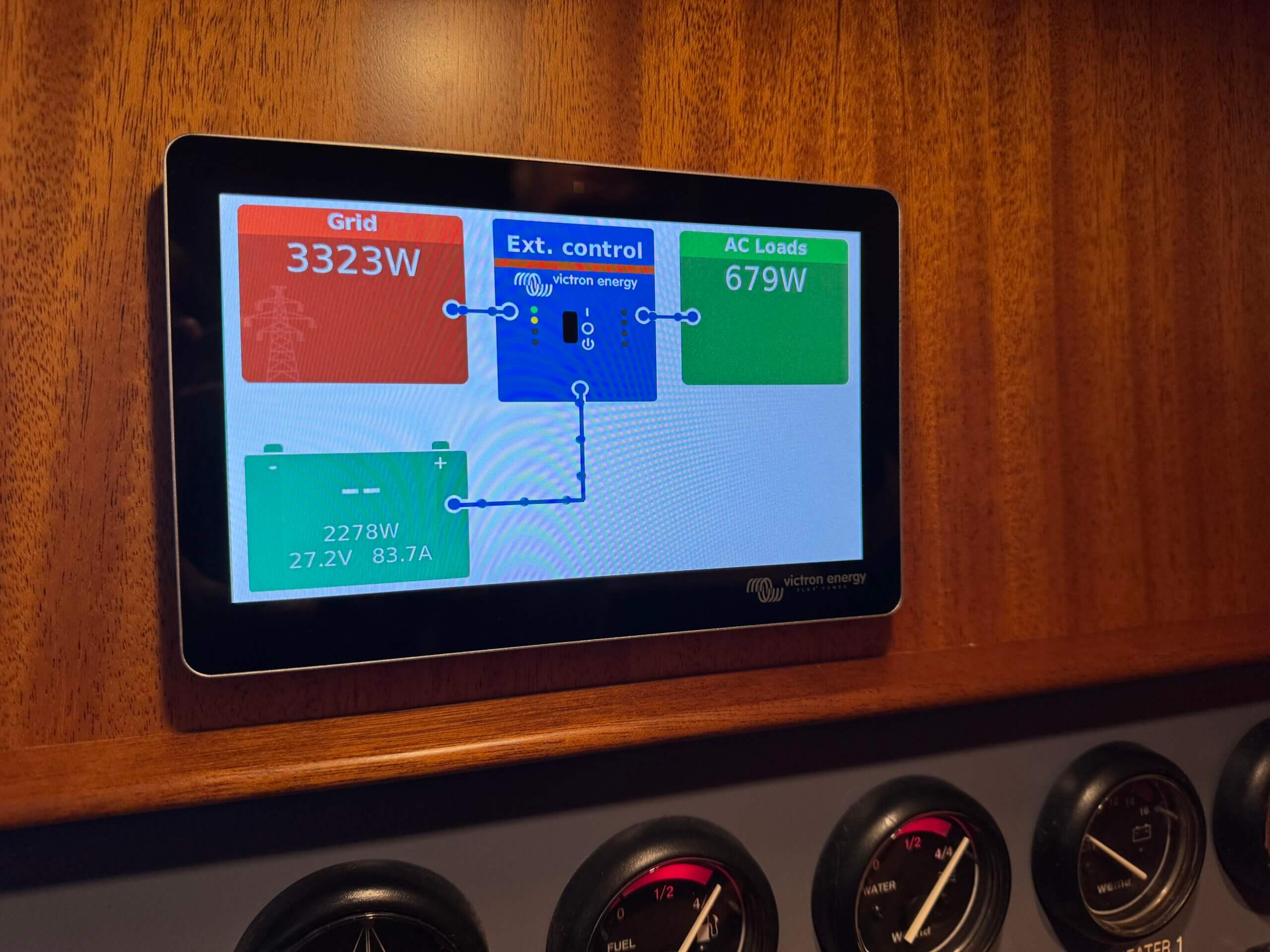Just before our departure on March 2, after a night of anchoring on the Grevelingen, we decide to replace our current lead batteries with lithium batteries after all. In the morning the batteries are far empty with "normal use for us" and are at 22 volts. A sign that these batteries are nearing the end of their service life. Also, with our current usage (which we don't really want to change) that would mean running the generator very often to recharge the batteries. Especially since we plan to live "off grid" a lot during our trip.
We still have 4 weeks before our departure and decide to quickly tackle this "battery project" now that we have the time and don't live on the boat yet. Better now than sometime in the next few months when we are on the road.
Toine spent several days researching on the Internet and making the technical diagrams for the installation on the SeaQuest. How enormously nice it is that Toine has this technical knowledge and can also do the installation himself with professional advice and help 👍😊.
We make the choice of Victron's battery set, consisting of:
- Two 24v batteries of 300 Ah each.
- Charger with charging capacity of 120 A.
- Inverter with a capacity of 5,000 watts.
- Operating system for monitoring batteries and displaying digital information on a nice little screen.
All this is delivered within 2 days by Bootman in IJsselstein. Together we spend 4 full days on the installation. Toine does most of the work but Mira also helps well. Now just 2 weeks later after our initial decision everything is installed. This would not have been possible so quickly without Toine's technical insight, strength and perseverance 👏👌💪😎🥰.
What are the benefits for us of moving to lithium batteries and a larger inverter?
- Six times more battery capacity. This is partly due to larger batteries and partly because the lithium batteries can be discharged much deeper and charged to 100% faster (600 Ah instead of 120 Ah).
- As a result, we need the generator (which runs on diesel) much less often. With off grid only an hour every 4 days instead of at least 1 hour every day.
- The batteries will last a lifetime if used properly.
- Twice as much 220v use possible at the same time (5,000 watts instead of 2,500 watts).
- For cooking, we are more independent of gas by being able to use a more powerful kettle, a rice cooker, a slow cooker and an induction stove more easily.
- To use the washing machine, without shore power, we no longer need to run the generator.
- Starlink can be on continuously even when we are off grid.
- We also immediately incorporated the connection to 110v (soon to be needed for shore power in USA and Canada) neatly with the old Mastervolt charger.

